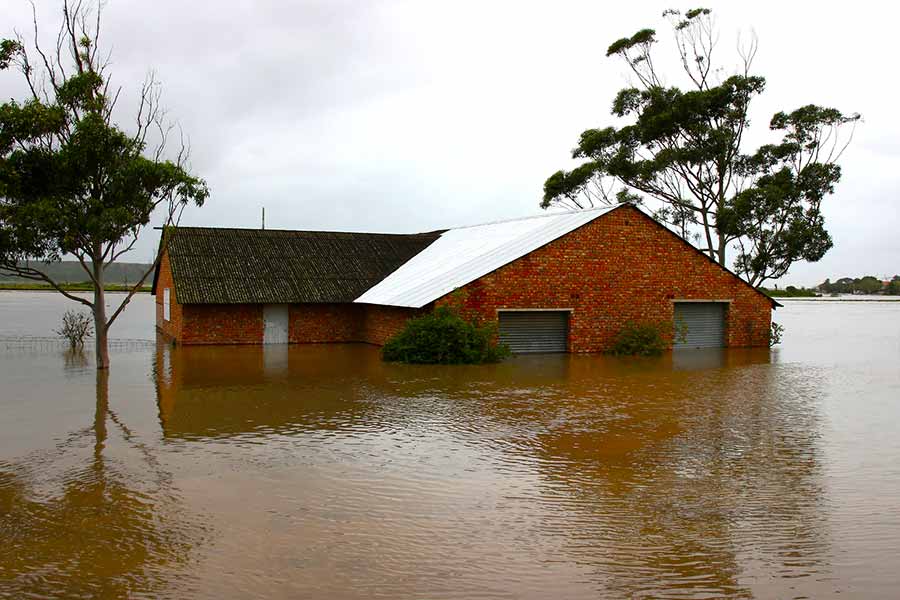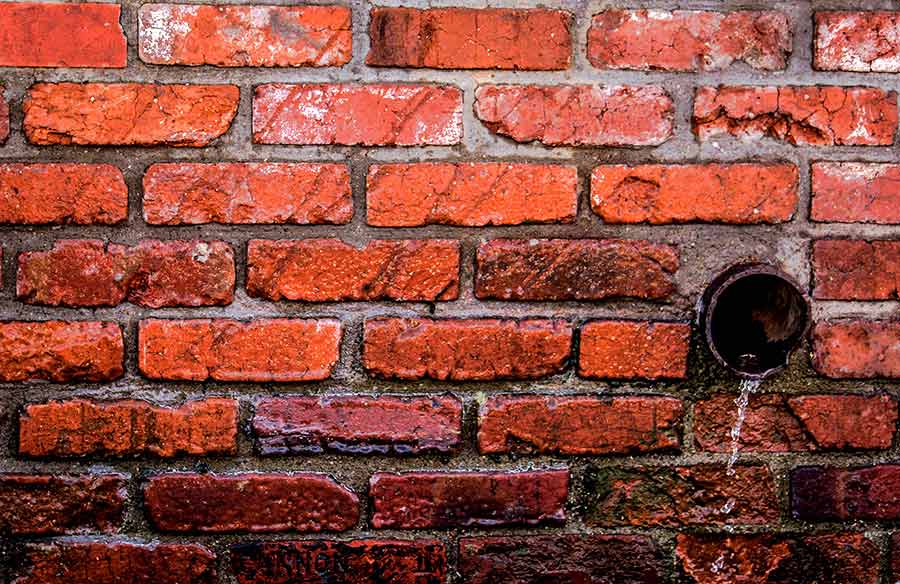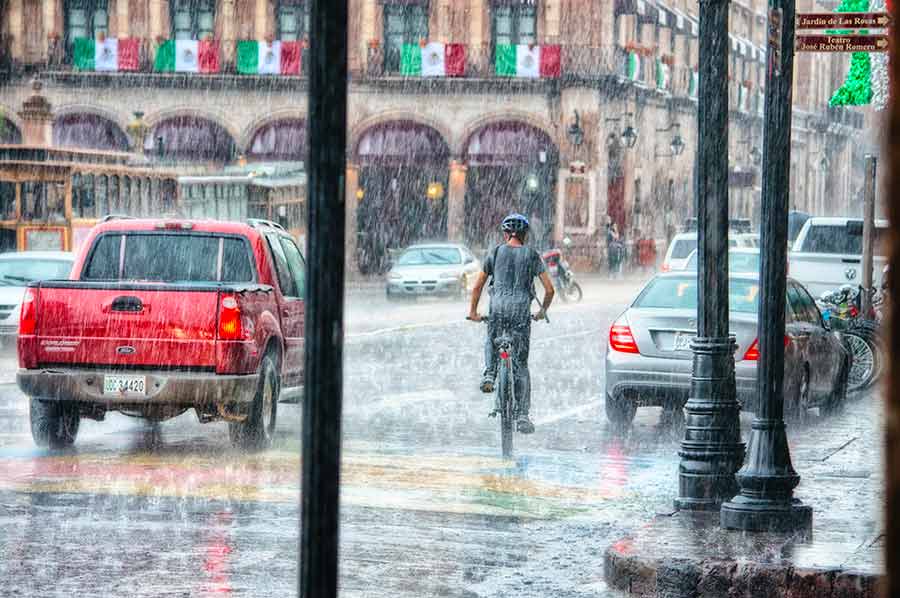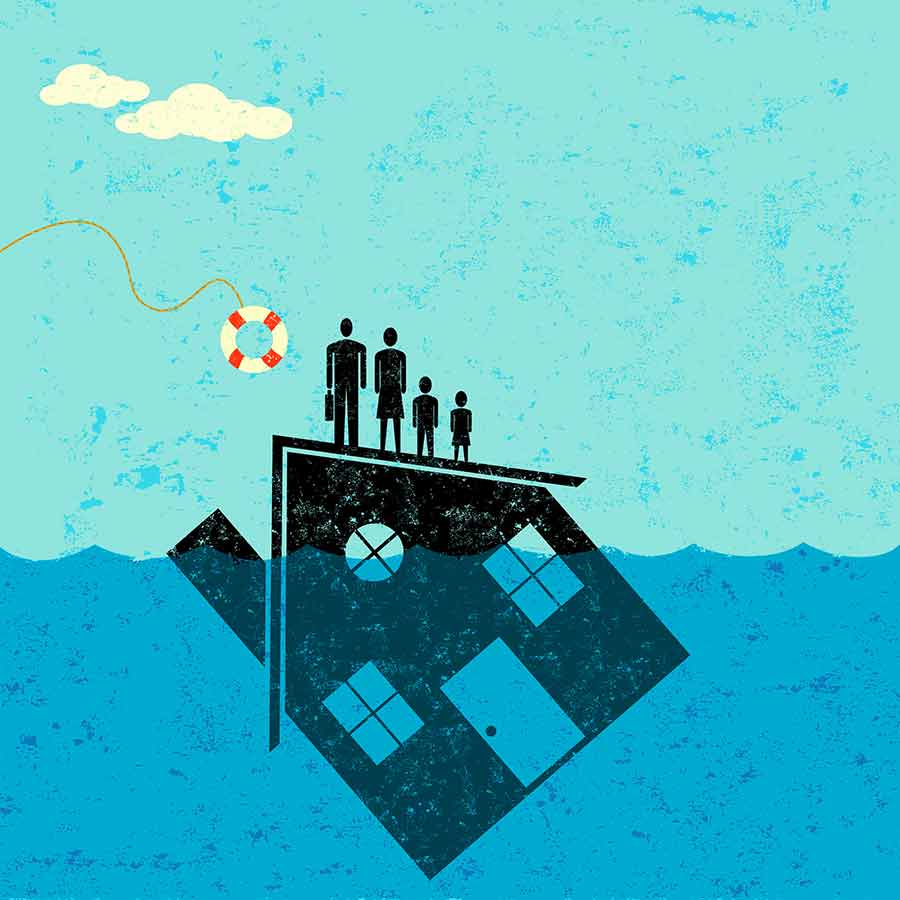Written by Andy Gurczak
October 14, 2021
Water Damage Restoration
Water intrusion can be incredibly destructive regardless of the type of structure. Be it residential or commercial. Over time, excess moisture can cause serious issues within an indoor environment. So without proper water extraction, decontamination and drying, numerous long-term effects can take hold of a building. It can even cause long-lasting structural damage as well as pose multiple health risks. For this reason, a proper water damage restoration process is crucial whenever water damage occurs.
This intervention should be as soon and as effective as possible. In fact, it’s essential to act within the first 24 to 48 hours to minimize the effects of water damage.
Water damage restoration can also be quite costly. So filing an insurance water damage claim could be necessary to start the water damage repair process. Read on ahead to learn more about water the water restoration process.
Water Damage Restoration Categories
A good place to start dealing with the water restoration process is to understand the types of water damage.
There are specific sets of practical standards for water mitigation, flood damage repair, and sewage cleanup.
Category 1 Water Damage
This category comprises portable, and sanitary water sources fit for human consumption. Therefore, this type of water does not threaten ingestion, dermal, or inhalation exposure. Moreover, this type of water damage includes broken supply lines, sprinkler systems, overflowing containers with no contaminants, or natural sources like rain or meltwater. Finally, this is known as clean water.
Category 2 Water Damage
This category consists of water containing significant contamination. As a result, it could cause sickness or discomfort if humans consume or come in contact with it. In addition, this type of water contains unsafe levels of microorganisms and/or chemical or biological matter.
For example, it could contain diluted urine, detergents, seepage from hydrostatic pressure, or ruptured storage tanks. This is known as “gray” water.
Category 3 Water Damage
This is when the water is “grossly contaminated.” Thus, it contains harmful pathogenic and toxigenic agents. Raw sewage is by far the most common offender of “black” water. If sewage damage restoration is not completely remediated, it can be deadly to people and destructive to the property.
Moreover, sources of black water include:
- Sanitary sewer backups.
- Salty water from rivers and streams.
- Flooding seawater.
- All forms of ingress from natural events. In fact, it could also contain contaminants like pesticides and even heavy metals.
With this in mind, it is important to also note that a category of water damage can amplify into a more serious one if not fixed quickly. Furthermore, wet, warm, and enclosed areas are perfect breeding grounds for organic pathogens and mold. So be sure not to stall whenever you have experienced water damage. Instead, take action as soon as possible.
Water Damage Restoration Classes
Water intrusion is also divided into four classifications:
Class 1 Water Damage
A class 1 water damage is when only a minimal amount of water has flowed onto low porosity materials. This class of water damage requires limited mitigation, and little moisture is left after water removal. Moreover, a minimal amount of evaporation is necessary to finish drying. An example of class 1 water damage would be an overflowed toilet on a tile floor.
Class 2 Water Damage
This would be when a significant amount of water discharge, and the exposed materials are medium to high porosity. Since the materials affected are more porous, there is greater absorption, and the water damage process is lengthier. The drying time would also take longer. Examples would be a ruptured pressurized water line inside a gypsum board wall.
Class 3 Water Damage
A class 3 damage consists of a large amount of water absorbed by highly porous materials. As a result, the highest rate of evaporation is necessary for the water damage restoration process. For instance, a storm-forced leak that floods a building’s interior and soaks carpeted areas would be a class 3 water damage.
Class 4 Water Damage
This is when water intrudes and is trapped by building materials and assemblies. For this reason, the restoration process is difficult, time-consuming, and expensive. In addition, affected areas are highly porous or tightly confined and require special methods and equipment for the restoration process.
Longer drying time or substantial vapor pressure differentials might also be necessary. An example would be storm-water flooding of a wooden enclosure.
Once the categories and classification of the water damage have been assessed, proper steps can then be taken to mitigate and repair the damage. Each range of categories, compounded by the class of water intrusion, will require different skills for assessing the damage.
Water Damage Mitigation
Whichever the class and category of water damage, it needs speedy and effective water damage mitigation.
However, water mitigation is about much more than just drying and cleaning a property. There are many other factors to consider, such as decontamination and treating porous materials. For example, an efficient water damage restoration process will evaluate three criteria to determine the best course of action:
- Amount of property damage
- Degree of contamination
- Replacement costs vs. restoration costs
In addition, strict actions are necessary in water mitigation, such as the removal of damaged materials. Molds and mildew that have accumulated in areas in your property will be disinfected and deodorized to restore a healthy environment. Moreover, further cleaning and deodorizing should is important to ensure your real estate is back in top shape.
Water damage mitigation should happen immediately after flooding or water buildup. Therefore, the water mitigation process will depend on how long your property suffered water exposure. Air humidifiers and drying equipment must be turned on round the clock in areas with severe water damage. It is also recommended to get the temperature, humidity, and moisture of your property tested. This way, you can see if it has been restored to usual standards.
Tips for the Water Damage Restoration Process
-
- Shut off the source of water at fault for the damage
- Remove any standing water and dry out areas with high saturation. If the flooded area has furniture and valuable items like paintings or electronic devices, it is important to get these items in a safe place. Carpeting and rugs should be removed immediately and laid outside to dry.
- Water-damaged ceilings should be dealt with immediately because they can fall off and cause accidents and further damage.
- Get a professional to repair any extensive water damage. Besides their technical skills, water damage restoration services have high-powered equipment that can facilitate the process. Air movers are especially powerful in promoting fast drying, and dehumidifiers remove any moisture from the air. Moreover, air scrubbers restore cleanliness and sanitation by removing musty smells that come with mildew.
- Contact your insurance company as soon as possible and report the damage. The sooner you file your claim, the faster you’ll be able to start the water damage restoration process.
Best way to beat the insurance company is to hire AllCity Adjusting
At AllCity Adjusting we help residential and commercial clients alike get the claims support they need. Moreover, we have over 50 years of combined experience helping get our clients the max settlement time and time again. If your claim has been low balled or denied entirely we can help increase your maximum settlement. Call us today for a FREE consultation. Experience the AllCity difference.
Real Support When You Need It!
Related Articles
7 Red Flags That Indicate You Need to Hire a Public Adjuster
If you own property, managing roofing insurance claims might seem tough. Knowing how to quickly deal with roof damage insurance claims from water, weather, fire, or unexpected events is helpful. In this guide, we’ll share useful tips to help you understand and work through roofing insurance claims more easily, aiming for a quicker solution.
Navigating Fire Damage Claims: What Every Property Owner Should Know
If you own property, managing roofing insurance claims might seem tough. Knowing how to quickly deal with roof damage insurance claims from water, weather, fire, or unexpected events is helpful. In this guide, we’ll share useful tips to help you understand and work through roofing insurance claims more easily, aiming for a quicker solution.
The Role of a Public Adjuster in Water Damage Claims
If you own property, managing roofing insurance claims might seem tough. Knowing how to quickly deal with roof damage insurance claims from water, weather, fire, or unexpected events is helpful. In this guide, we’ll share useful tips to help you understand and work through roofing insurance claims more easily, aiming for a quicker solution.
Understanding Water Damage Claims: A Comprehensive Guide for Homeowners
If you own property, managing roofing insurance claims might seem tough. Knowing how to quickly deal with roof damage insurance claims from water, weather, fire, or unexpected events is helpful. In this guide, we’ll share useful tips to help you understand and work through roofing insurance claims more easily, aiming for a quicker solution.
Essential Traits and Skills for a Successful Public Adjuster
If you own property, managing roofing insurance claims might seem tough. Knowing how to quickly deal with roof damage insurance claims from water, weather, fire, or unexpected events is helpful. In this guide, we’ll share useful tips to help you understand and work through roofing insurance claims more easily, aiming for a quicker solution.
Tips Expedite the Process :Commercial Roofing Insurance Claims
If you own property, managing roofing insurance claims might seem tough. Knowing how to quickly deal with roof damage insurance claims from water, weather, fire, or unexpected events is helpful. In this guide, we’ll share useful tips to help you understand and work through roofing insurance claims more easily, aiming for a quicker solution.
Stay Up to Date With The Latest News & Updates
Don't Wait - Get More
Get a free 1 hour consultation on your next call. So call today and challenge the insurance company narrative on your policy claim. We can help you with all your public adjuster claims support. Let us help you get more.
Join Our Newsletter
Do you want to learn more about public adjusting. In this newsletter we create helpful tips and hints and you will receive notifications when we post new articles.
Follow Us
Follow us on the following social networks.








Recent Comments